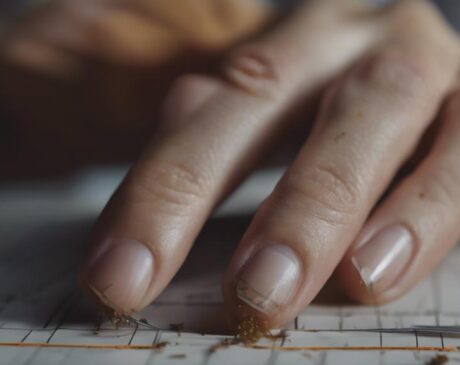What Does Fat Finger Nails Mean?
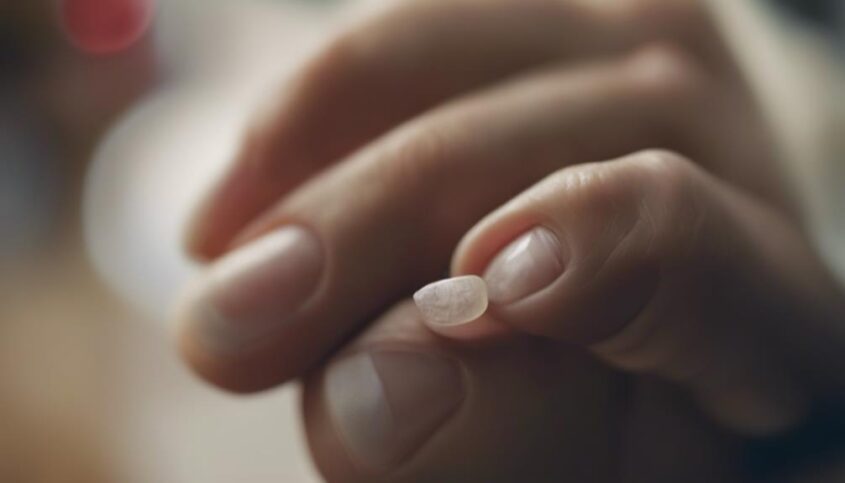
Fat finger nails, also known as clubbed fingers, are a potential sign of various underlying health issues. These can include respiratory and heart diseases, autoimmune disorders, and certain types of cancer. Recognizing clubbed fingers is essential as they may indicate serious medical conditions. Understanding the causes and implications of fat finger nails is crucial for early detection and prompt medical attention. It's important to be aware of the significance of nail changes and how they can reflect overall health. For a deeper understanding of this topic and its implications, continue exploring the information provided.
Key Takeaways
- Fat finger nails may indicate underlying health conditions like heart or lung diseases.
- Clubbing of the fingers can be a sign of respiratory, gastrointestinal, or autoimmune disorders.
- Genetic factors and nutritional deficiencies can contribute to fat finger nails.
- Monitoring changes in nail shape can aid in early detection of serious health issues.
- Consulting a healthcare professional for proper evaluation is crucial when fat finger nails are observed.
Causes of Fat Finger Nails
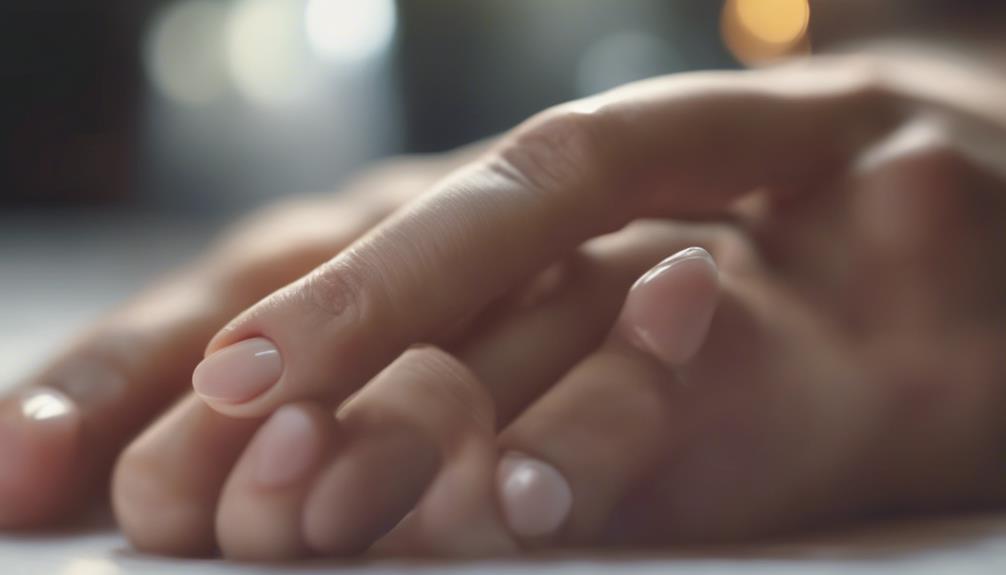
Fat finger nails, also known as clubbed fingers, can be caused by various underlying health conditions. One common cause is respiratory or heart diseases, where low levels of oxygen in the blood can lead to clubbing of the fingers. Additionally, gastrointestinal conditions such as inflammatory bowel disease or liver cirrhosis may also result in this nail abnormality. Genetic factors can play a role in the development of clubbed fingers, as certain individuals may be predisposed to this condition.
Moreover, clubbed fingers could be a sign of more serious health issues such as lung cancer or cardiovascular diseases. In some cases, clubbing may be linked to thyroid disorders or autoimmune diseases. Understanding the underlying cause of fat finger nails is crucial in order to address any potential health concerns. Seeking medical advice and undergoing appropriate testing can help in diagnosing the root cause of this condition and managing any associated health problems effectively.
Health Implications
Clubbed fingers, or fat finger nails, can serve as indicators of underlying health conditions with potential implications for overall well-being. The presence of clubbing in the fingers, where the nails curve excessively around the fingertips, may suggest issues such as heart or lung disease, inflammatory bowel disease, liver conditions, or certain infections. These changes in the nails are often linked to reduced levels of oxygen in the blood, leading to the abnormal growth of tissues in the fingertips. Recognizing clubbed fingers early on can prompt individuals to seek medical advice and potentially diagnose and address any underlying health issues promptly. Monitoring changes in finger nails, along with other symptoms, can aid in the early detection of serious health conditions, highlighting the importance of paying attention to seemingly minor physical manifestations. Consulting with a healthcare professional for proper evaluation and diagnosis is crucial when clubbing of the fingers is observed, as it could signify an underlying health concern that requires attention.
Dietary Factors
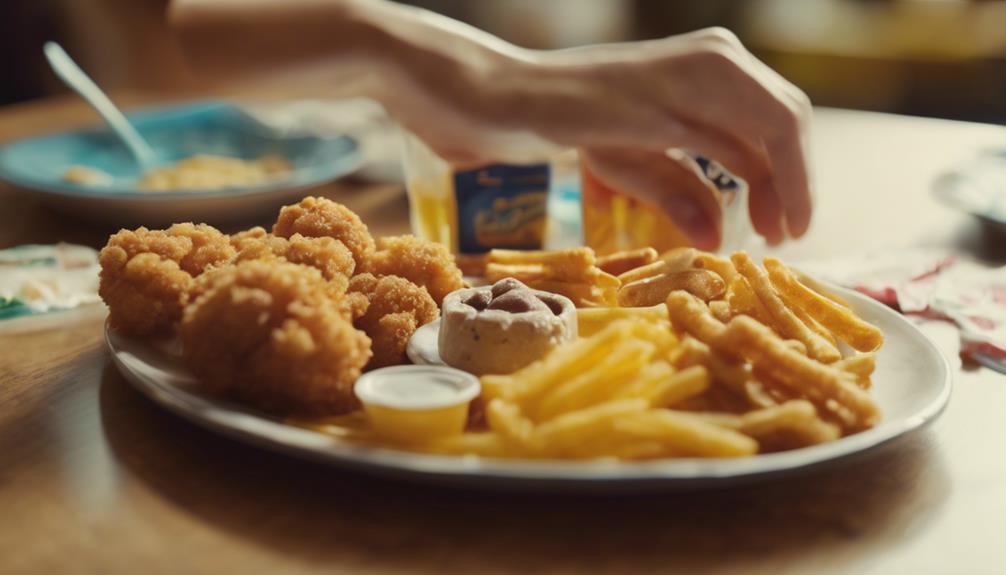
The role of dietary factors in influencing nail health and potential implications for overall well-being is a subject of increasing interest among healthcare professionals and researchers. A diet rich in essential nutrients like vitamins, minerals, and proteins is crucial for maintaining healthy nails. For instance, biotin, commonly found in foods like eggs, nuts, and cauliflower, is known to promote nail strength and growth. Omega-3 fatty acids, present in fish, chia seeds, and walnuts, can help combat nail brittleness.
Conversely, deficiencies in key nutrients such as iron, zinc, and vitamin C may manifest as brittle, discolored, or slow-growing nails. Therefore, incorporating a diverse range of nutrient-dense foods is vital for supporting nail health. Moreover, hydration plays a significant role in nail condition, emphasizing the importance of adequate water intake.
Innovative research continues to explore the intricate relationship between dietary patterns and nail health, shedding light on novel approaches to enhance overall well-being through optimized nutrition.
Hygiene and Nail Care
Proper nail care and hygiene practices are essential for maintaining healthy nails. Regular nail trimming helps prevent ingrown nails and promotes overall nail health. Developing a routine for cleaning and moisturizing your nails can also prevent fungal infections and keep your nails looking their best.
Nail Trimming Importance
Regular nail trimming is essential for maintaining optimal hygiene and proper nail care. Keeping nails trimmed helps prevent dirt and bacteria from accumulating underneath them, reducing the risk of infections. Properly trimmed nails also promote healthy nail growth and prevent issues such as ingrown nails. By maintaining a regular nail trimming routine, individuals can ensure that their nails remain neat and tidy, enhancing their overall appearance. Additionally, trimmed nails are less likely to snag on clothing or objects, reducing the risk of damage or injury. Embracing nail trimming as a part of regular self-care routine not only promotes hygiene but also contributes to overall wellbeing and confidence.
Hygiene Practices for Nails
Maintaining optimal hygiene and nail care involves adopting effective practices to ensure the cleanliness and health of your nails. Innovative hygiene practices for nails include regular washing with a gentle cleanser to remove dirt and bacteria. Using a nail brush can help clean hard-to-reach areas around the nails. Keeping nails trimmed and filed can prevent dirt buildup and reduce the risk of infections. Moisturizing cuticles with nourishing oils or creams can promote healthy nail growth and prevent hangnails. It is crucial to avoid biting nails or using them as tools to prevent damage and the spread of germs. By incorporating these innovative hygiene practices into your routine, you can maintain clean, healthy nails and promote overall well-being.
Medical Conditions
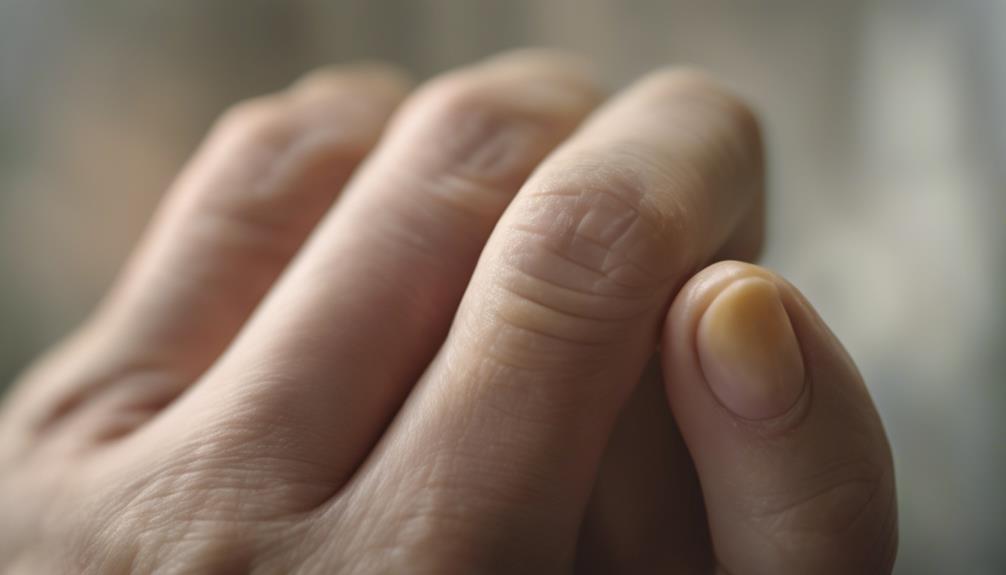
In the realm of fat finger nails, understanding the potential medical conditions associated with this phenomenon is crucial for proper diagnosis and treatment. Fat finger nails, also known as clubbing, can be indicative of underlying health issues. One common medical condition linked to fat finger nails is respiratory problems such as lung cancer or chronic obstructive pulmonary disease (COPD). Clubbing can also be a sign of cardiovascular diseases like congenital heart defects or endocarditis. Liver and gastrointestinal disorders, such as inflammatory bowel disease or cirrhosis, may also manifest through nail changes like clubbing. Furthermore, autoimmune diseases like lupus or inflammatory arthritis can present with fat finger nails as a symptom. Recognizing these medical conditions early on through the observation of nail changes can lead to timely interventions and improved outcomes. Therefore, individuals experiencing fat finger nails should seek medical attention to determine the underlying cause and receive appropriate treatment.
Treatment and Prevention
When it comes to the treatment and prevention of fat finger nails, nail care tips and healthy nail habits play a crucial role. By maintaining proper nail hygiene, such as keeping nails clean and trimmed, individuals can prevent issues like fat finger nails. Additionally, incorporating a balanced diet rich in essential nutrients can contribute to overall nail health and prevent nail abnormalities.
Nail Care Tips
Proper care and attention to your nails can significantly enhance their health and appearance. To keep your nails in optimal condition, consider the following nail care tips. Firstly, moisturize your nails and cuticles regularly to prevent dryness and brittleness. Secondly, trim your nails straight across to avoid ingrown nails and maintain a neat appearance. Additionally, protect your nails by wearing gloves during household chores or when using harsh chemicals. It's also essential to avoid using your nails as tools to prevent damage. Lastly, consider using a nail hardener or nourishing nail polish to strengthen and protect your nails. By incorporating these innovative nail care practices into your routine, you can promote healthier and more beautiful nails.
Healthy Nail Habits
Adopting consistent and effective nail care habits is essential for maintaining the health and appearance of your nails. To promote healthy nails, keep them clean and dry, trim them regularly, and moisturize the cuticles. Avoid using harsh chemicals and opt for gentle nail care products. Protect your nails by wearing gloves during household chores and avoiding using them as tools. If you notice any changes in your nails, such as discoloration, brittleness, or unusual growth, consult a dermatologist for proper diagnosis and treatment. Remember to maintain a balanced diet rich in vitamins and minerals to support nail health from the inside out. By following these healthy nail habits, you can ensure strong, beautiful nails that complement your overall look.
Frequently Asked Questions
Can Fat Finger Nails Be a Sign of a Vitamin Deficiency?
Fat finger nails can indeed be a sign of a vitamin deficiency. Deficiencies in nutrients like biotin or vitamin B12 can manifest in nail abnormalities. One study found that up to 30% of individuals with nail changes had underlying nutritional deficiencies.
Are Fat Finger Nails More Common in Certain Age Groups?
Fat finger nails can be more prevalent in certain age groups due to factors like aging, hormonal changes, and medical conditions. Understanding these associations can aid in diagnosing underlying health issues and guiding appropriate treatments.
Can Fat Finger Nails Be a Result of Genetics?
Fat finger nails can be a result of genetics, as hereditary factors play a significant role in nail characteristics. Genetic predispositions can influence the thickness, shape, and overall appearance of fingernails, contributing to variations in nail morphology.
Are There Any Specific Nail Conditions That Can Cause Fat Finger Nails?
Fat finger nails can appear due to various nail conditions such as clubbing, a symptom associated with certain medical conditions like lung disease. In these cases, nails may thicken and curve, giving the appearance of "fat" finger nails.
Is There a Correlation Between Fat Finger Nails and Overall Hand Health?
There is a correlation between the appearance of fat finger nails and overall hand health. Changes in nail size and shape can sometimes indicate underlying health issues, making regular nail assessments an important part of hand health maintenance.


